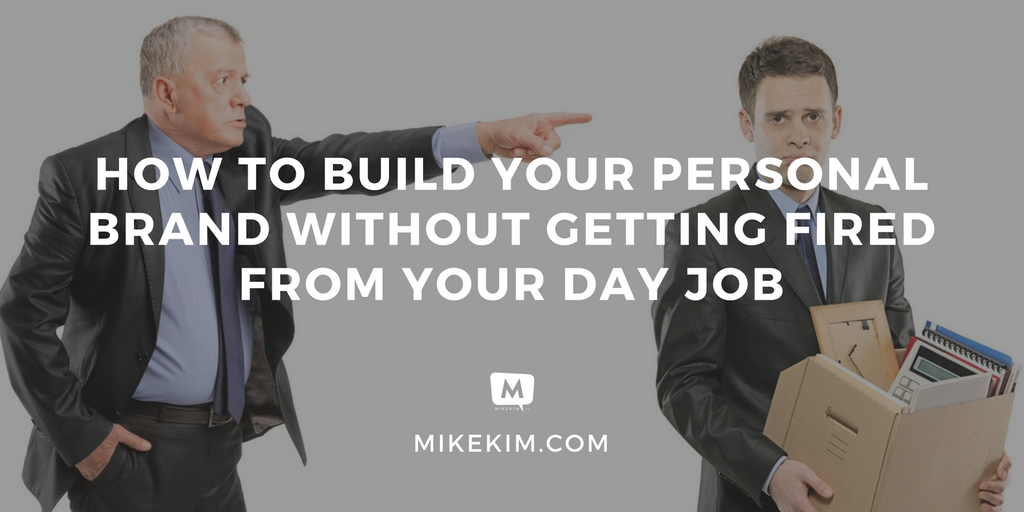This is a guest post by blogger and founder of Notable Themes, John Meese.
 Building a personal brand is a long-term investment.
Building a personal brand is a long-term investment.
Once you’ve established yourself as a thought leader, you have the freedom to influence the direction of your field, reinforce your own credibility, or even change your industry of focus.
That’s because the center of every personal brand is you. Your interests may change―or at least your focus―but you’ll still be the same individual, who your audience will trust.
Having a powerful personal brand is immensely valuable―but how do you get there?
More specifically, how do you build a personal brand while you still have a full-time job?
The Present and Pending Versions of YOU
In a previous blog post, Mike mentioned the difference between the “Present” you and the “Pending” you while making a career pivot of any kind.
- The Pending You represents what you want to do, and may not be related to the job you have right now.
- The Present You represents your current job and related interests, and is most likely what actually pays the bills.
There’s a tension here, because The Present You doesn’t fulfill your desires or aspirations―which is why The Pending You is pulling you in a new, exciting direction.
But then there’s The Public You … this is what people see, and it’s also where things start getting tricky.
The Public Tension Between Your Present and Pending
The Public You must be strategically managed.
On some level, that’s always going to be true―but it’s especially important when you’re counting on a full-time job to pay your bills every month. If you’re not careful here, you’ll make one of two self-sabotaging mistakes. You’ll either:
- Jeopardize your day job by growing your personal brand, or
- Limit your personal brand because of your fear of mistake #1.
It’s probably true that none of your co-workers have their own blog or podcast, which means you’ll be sticking your neck out. But no―that does not mean you should create an anonymous (or pseudonymous) platform. You just need to stick to a plan.
Your Four-Step Action Plan:
- Identify the link between your dream and what you’re doing right now. Instead of focusing on the differences, start by what each version of you has in common. Are your day job and personal brand both tech-related? Based on similar values? Make note of that.
- Clarify how your personal brand helps your full-time job. Even though your end goal may be to pivot from your job to thought leadership, you need to identify how (for now) this move helps your employer. Will your brand improve key client relationships? Or give credibility to your employer?
- Inform your supervisor of your plans. This is where most people screw up. If you bring up your blog before your boss does, you own the conversation. Make the case for your brand, and let your boss know how this will (or will not) affect your on-the-job work.
- Commit to consistent growth. Don’t expect your personal brand to become a money-making machine overnight. Instead, set attainable goals each month and celebrate gradual growth without putting strain on your day job or family life.
Follow that plan, and you’ll rid yourself of much of the fear and anxiety that come from trying to juggle your personal brand on the side.
You don’t need to give your employer a detailed map of your step-by-step plan towards quitting that job, but you do need to let your employer know that your personal brand is nothing to fear.
Do you think you will face opposition if you let your current job know you are building your own brand? Let us know below and we’ll be happy to chime in with possible solutions.
 John Meese built an online business from scratch while working a full-time job at Chick-fil-A. These days, he’s a full-time blogger, online education specialist, and co-founder of Notable Themes. Learn the three mistakes most bloggers make in John’s free ebook at johnmeese.me.
John Meese built an online business from scratch while working a full-time job at Chick-fil-A. These days, he’s a full-time blogger, online education specialist, and co-founder of Notable Themes. Learn the three mistakes most bloggers make in John’s free ebook at johnmeese.me.